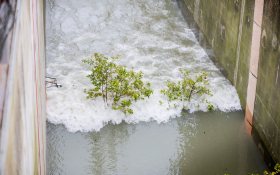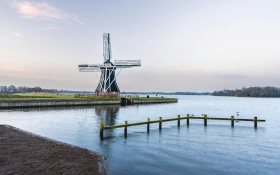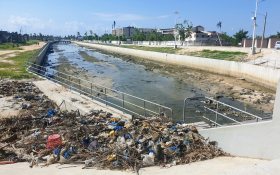Delft researchers to study floating tunnel between Hainan island and Chinese mainland
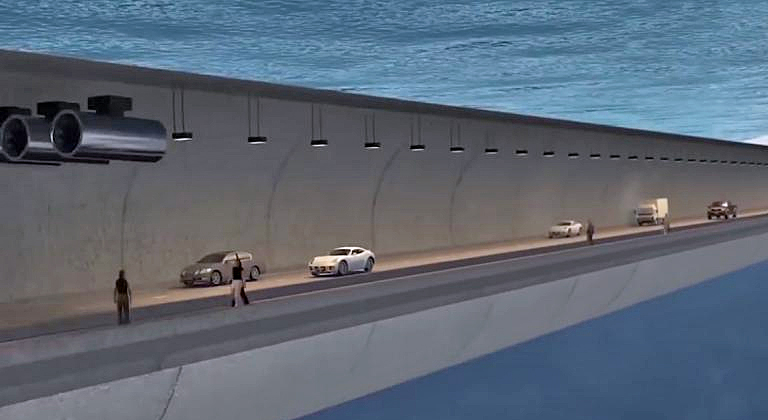 Chinese engineering and construction company CCCC has plans to develop a submerged floating tunnel to cross the 120 m deep Qiongzhou Strait.
Chinese engineering and construction company CCCC has plans to develop a submerged floating tunnel to cross the 120 m deep Qiongzhou Strait.
Researchers of the Delft University of Technology have been asked to be part of the project.
A submerged floating tunnel has never been built before and Delft research will look into the risks of such an option to connect the Hainan island to the China mainland.
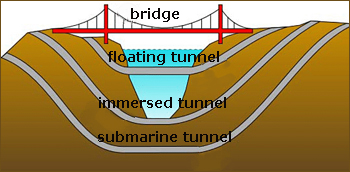 CCCC has four options to choose from..
CCCC has four options to choose from..
Technically difficult to build
Submerged floating tubes allow the construction of tunnels in extremely deep water where conventional bridges or tunnels are technically difficult to build or prohibitively expensive.
Depending on the buoyancy of the tunnels, cables anchored to the sea bed or to pontoons at the surface would prevent them from floating to the surface or submerging, respectively.
More Dutch engineers involved
‘We are getting this project started,’ says professor Bas Jonkman, Head of the Hydraulic Structures and Flood Risk section of TU Delft Faculty of Civil Engineering and Geosciences, adding that more Dutch engineers such as engineers from the company TEC (Tunnel Engineering Consultants) are also involved.
‘We just signed the contracts and we are waiting for the Chinese to do the same. We will be hiring two PhD students, part of whose task is to look into the risk analyses. In the meantime, we already have bachelor students performing experiments with possible prototypes in our labs in Delft.’
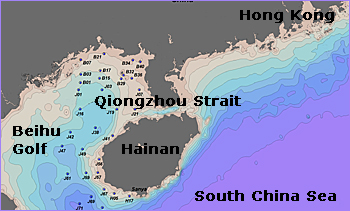 The Qiongzhou Strait is 30 km wide and 120 m deep and is prone to earthquakes and typhoons.
The Qiongzhou Strait is 30 km wide and 120 m deep and is prone to earthquakes and typhoons.
Vulnerable
‘The idea is to place the tube underwater, deep enough to avoid water traffic and weather, but not that deep that we need to deal with high water pressure,’ says Jonkman. ‘As a general rule of thumb, you can say that there is potential for floating tubes instead of tunnels on the sea floor for depths of 50 metres or more.’
But this is just theory. Though many countries have shown interest, namely Norway with its very deep fjords, a submerged floating tunnel has never been built before.
Airport at sea
Jonkman recently proposed a submerged floating tunnel to link the Netherlands with a yet to be built airport at sea, especially if the airport island is to be constructed in the deeper parts of the North Sea.
The Dutch Parliament has requested a study into the feasibility of a new airport on an artificial island in the North Sea.
This news item was originally published on the website of the Delft University of Technology and Tunnel Engineering Consultants (TEC).
Read also on this website
● Arcadis designs tunnel under Suez Canal in Egypt, 22 May 2018
● Tunnel section Hong Kong-Zhuhai-Macao bridge completed, 9 July 2017
● Fugro contracted to gather more data for construction of new coastal highway, Norway, 1 June 2016
● BAM consortium prequalified for main construction Fehmarnbelt tunnel, Denmark, 4 March 2016
● Country: China
More information
Delft University of Technology
Department Hydraulic engineering
Delft, the Netherlands
+ 31 15 27 89802
www.tudelft.nl/en/ceg
Tunnel Engineering Consultants (TEC)
Amersfoort, the Netherlands
+ 31 88 348 2540
www.tec-tunnel.com

